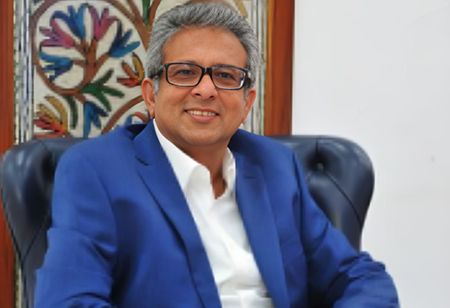
In an interaction with Adlin Pertishya Jebaraj, correspondent of Homes India Magazine, Haresh M Mirpuri, Founder of Essensai 067, highlights that the future of housing in India lies in designs that respect the environment, culture and sustainable living. Technology will be a vital component of advancing and enhancing how we live with nature and heritage rather than against it.
Haresh Mirpuri is a second-generation entrepreneur and visionary with three decades of experience in fashion manufacturing, ethical luxury, sustainable design, and community-driven development. He is the founder of Aranyani – renowned for its fusion of India’s Vedic heritage and contemporary craft, establishing best-in-class global standards in responsible luxury.
How do you see the current sustainability and heritage-preservation trends influencing the design of modern residential developments?
I believe that this is a growing trend in India. Today’s youngsters want to know more about their true origin and are willing to inherit their identity. This will force design towards sustainability, respecting the impact that the design would have on the environment and one’s lifestyle. Developers are now utilizing eco-friendly materials, energy-efficient systems, and green building practices into their projects.
At the same time, there is a renewed interest in preservation of cultural and architectural history, incorporating traditional elements along with modern aesthetics. This improves the experience of living and creates a sense of community and longevity toward the environment.
How can developers balance commercial viability with the long-term vision of heritage conservation and environmental stewardship?
It requires R&D and the willingness not to give us any other option but to embrace it completely. For instance, when we designed Essensai 067, we did just that. Additionally, it isn't only about design; it is about incorporating sustainability and the idea of heritage into every decision—selecting materials that are authentic as well as environmentally friendly, scrapping historic pieces as opposed to replacing them, and ultimately constructing spaces that serve the cultural narrative.
Developers also need to work with stakeholders early in the design process, from local communities to regulators, to establish a shared stake in environmental and heritage objectives and reconcile these with their commercial objectives for the long-term engagement.
Also Read: Naugaon Set to Become the Next Hotspot for Weekend Homes
How do you balance open green spaces, ecological design principles, and the commercial density required for viable urban projects?
Green spaces are as valuable as any other space. We need to adopt this perspective. For example, when we created our green spaces, we knew it would be a great space for pop-ups. We just must think out of the box. In addition, by infusing ecological design principles into these aspects— using native plants, collecting rainwater, and employing natural shade in urban design not only enhances ecologically sustainable elements but also addresses the need for appealing spaces for people to enjoy.
Strategic zoning and modular planning can enable a commercial density to be maintained, without having to lose the greenery, and both residents and businesses may all benefit from the urban landscape having a balance of vibrancy, nature, ecology and commerce.
How do participatory design processes shape better outcomes for public spaces within residential clusters?
I believe if we know what the customer truly needs more than what he/she desires and bring the ideas forward to them, it will work. For example, every customer needs a healthy lifestyle. The same customer may desire the latest air conditioning systems.
If we can showcase the brick cladding, which will reduce heat by 4 degrees, and she may not need too much air conditioning, that can reduce dry skin problems, better breathing, and hence a healthier life, the customer may opt for it.
Also Read: The Nitty-Gritty of Fragrance Industry - 2025 & Beyond
How do you see the future of residential developments where ecology, culture, and modern living coexist seamlessly?
I believe that the future will combine ecology, culture, and modern living and coexist. Technology will be used to create efficiency and not replace culture and ecology. It will be used to enhance and evolve our understanding of their importance and the way we can coexist.
We use cookies to ensure you get the best experience on our website. Read more...
Copyright © 2025 HomesIndiaMagazine. All Rights Reserved.